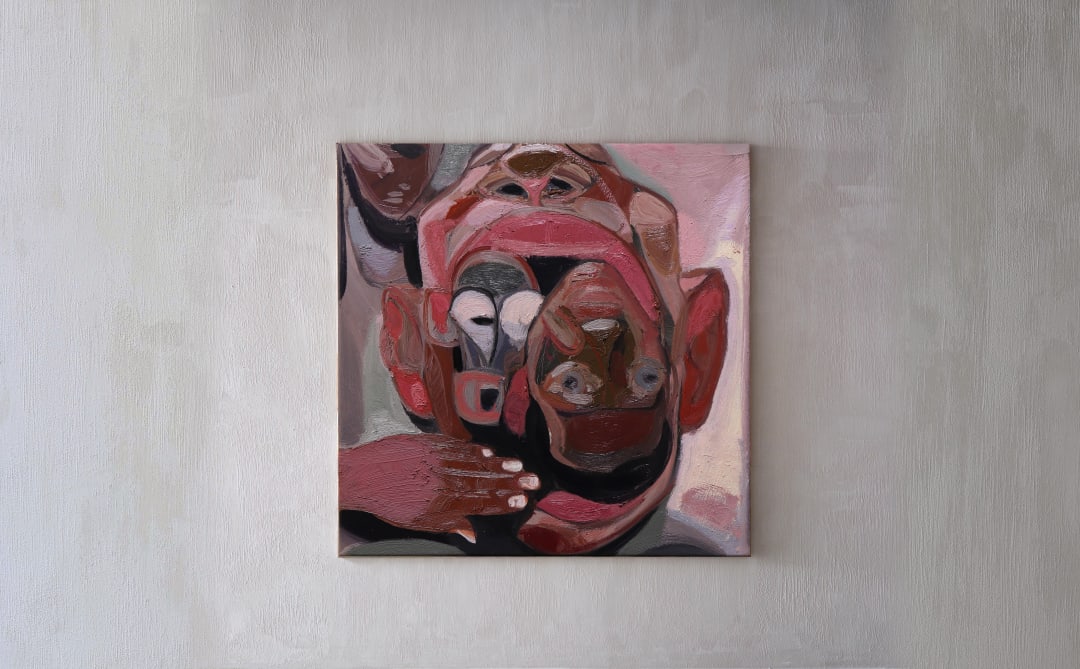“People mirror emotions when they are faced with them. I want to create a compelling interaction between the viewer and the bodies in my works, turning the viewer into an invader.”
Newchild is delighted to announce the opening of Sleepy Baby Bird,a solo exhibition by Ethiopian artistTesfaye Urgessa. Sleepy Baby Bird is the first solo exhibition of the artist’s work in Belgium.The exhibition brings together a new body of work and earlier works ranging from 2015 to 2021, which brilliantly showcase Urgessa’s evolution as an artist, both thematically and stylistically.
Tesfaye Urgessa is one of the most prominent contemporary Ethiopian artists.With an idiosyncratic style, and influences of Ethiopian traditional iconography, German Neo-Expressionism and the School of London, Urgessa’s works are architectural and powerful. His works are filled with art-historical references and take inspiration from biographical events, modern history and 20th-century philosophy. He studied with professors Bisrat Shibabaw and Mezgebu Tessema (who played an important role in his early formative years) at the Academy of Arts And Design in Addis Abeba. Urgessa subsequently received an MA from the Staatlichen Akademie der Bildenden Künste in Stuttgart, where he was also awarded with their eponymous prize.
The works in Sleepy Baby Bird use storytelling and social criticism to provide a compelling representation of unjust biases and evoke an inquiry into the politics of identity.The viewer is challenged to comprehend and mimic the emotions of the twisted bodies on the canvas.Yet, simultaneously, the exhibited works want to safeguard a feeling of hope and unveil an alternative for an enlightened future.The title Sleepy Baby Bird derives from an earlier work by the artist and epitomises Urgessa’s inquiry into human fragility and the tension between innocence and fear.
Urgessa’s canvases evoke memory without any apparent logic. His seemingly chaotic and unrestrained compositions are filled with objects and bodies of which the precise origin remains unknown, finding its way from the artist’s subconscious onto the canvas without premeditation. Working on multiple pieces simultaneously, he subsequently categorises his works in themed series, perhaps intending to offer new meanings to the elaborate iconography displayed in his works. One of such themes (probably his most recurrent one) is theVUP’S,an acronym referring to‘Very Unimportant People’. Characterized by clouds resembling weapons,theVUP series reveals exposed bodies that capture the artist’s frustration with the assassination of prominent human rights advocates. In the artist’s words, many of these intentional shootings were the fruit of a system based on “fear and ignorance”.Through the exhibited works, the artist unveils and decodes meaningful events from modern history and their effects on our psyche.
Another significant series within Urgessa’s oeuvre is the body of work titled‘No Country ForYoung Men’,of which three works are included in Sleepy Baby Bird. These works show an intertwined blocking of genderless bodies marching, at times resembling classical friezes, in opposing directions. Feet painted in oversized and gestural strokes re-appear in isolation as objects or icons, representing refugees in search of a better future.
A multitude of iconographical elements can be uncovered in Urgessa’s body of work. Open books with scribbled language remind us of the power of information, and the manipulation used for example by institutionalised religion to justify inequality. Mystic symbolism and the artist’s spiritual beliefs are also captured by way of all-seeing-eyes, an iconic Egyptian bust, or healing plants.
This exhibition will perhaps offer a new way of seeing that shifts viewers from the passive optics of looking at, to the act of looking with, through, and alongside the suffering—and joy—of our existence.
Tesfaye Urgessa (b. 1983 Addis Abeba; lives and works in Nürtingen, Germany) has been the subject of numerous solo exhibitions in the UK, Germany and Ethiopia. His works are included in the collections of prestigious institutions such as the Museum Of African Contemporary Art Al Maaden in Marrakech (MACAAL) and the Gallerie Degli Uffizi in Florence.

